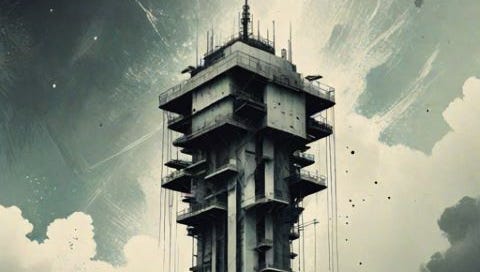I recently paid my first visit to “Otherland” - the Berlin-based bookstore for all things Sci-Fi (yeah!) and Fantasy (meh) and picked up a copy of Arthur C Clarke’s 1979 novel “The Fountains of Paradise” as well as Emma Newman’s Planetfall (to be read and reviewed at some point in the future).
If you have never heard of Arthur C Clarke: He is the 3x times winner of both the Nebula Award and the Hugo awards, the namesake (and founder) of the Arthur C Clarke award (the first winner of which was Margaret Atwood’s Handmaid’s Tale) and most famuously co-wrote the screenplay for “2001: A Space Odyssey”. He also has an orbit named after him (for being the first to realize that a geostationary orbit could be the perfect place for communication satellites) and is the author of the fabulous “Rama” book series, so I had high hopes for “The Fountains of Paradise”.
In The Fountains of Paradise, Vannevar Morgan is an engineer famous for designing and building the bridge crossing the Gibraltar strait from Spain to Morocco. An earthly bridge, however big, is not enough for Morgan however. His real goal is building a bridge into the sky in the form of a space elevator to significantly simplify space travel from both Earth and Mars.
The fascinating thing about The Fountains of Paradise is not the plot. Characters development is limited and the plot is about as predictable as it gets. It is amazing, however, how forward looking Clarke was in writing this book. Now a mainstay in science fiction, space elevators were a new idea in in 1970s (at least in the West - they were first proposed by Russian scientists in 1959). The idea of using nano fibres to construct the elevator cables is most likely also owed to Clarke’s background in physics and maths. Similarly, devices providing more or less a web and social media experience, a universal address to chat with anybody anywhere in the world (think Whatsapp), customized news feeds and wearable heart rate monitors weren’t the logical next step in technology when Clarke wrote this book. While all of this makes for interesting reading, it doesn’t really contribute all that much to the story and it feels like this book would have been much more enjoyable as a much shorter novella.
Ultimately, Fountains of Paradise is a story about technical progress in human’s exploration of space, but you wouldn’t know it from the first few pages, where Clarke sets the scene by going back to pre-historic Sri Lanka. Having moved to Sri Lanka in the 1950s, Clarke moves his book-version of Sri Lanka to the equator to make it the perfect location for a space elevator and then spins a back-story involving an early emperor building the famous Sigiriya mountain fortress and its water fountains. In doing so, he draws a parallel between the early engineers and their fantastic feats and Morgan building his space elevator in the same place. However, it feels like this whole back-story is more out of Clarke’s love for Sri Lanka than out of a real need to bring this element into the story.
Similarly, Clarke has woven in a fascinating (very) short story about an alien artefact passing through the solar system exchanging messages with earth and exposing human religion as a folly somewhat unique in the universe. But again, this interlude would make for a nice short story, but has little connection to the rest of the book.
Where does that leave me? It was definitely worth reading this book if only to tick a true classic off my to do list. The Fountains of Paradise was enjoyable enough, but didn’t provide much in terms of additional depth beyond marveling at an imagined engineering feat.
If you want to read Arthur C Clarke, I would recommend the Rama book series instead.



